Patterns
Kits
sundries
knitting tools, buttons and notions, project bags and other pleasing little things
knitting tools, buttons and notions, project bags and other pleasing little things
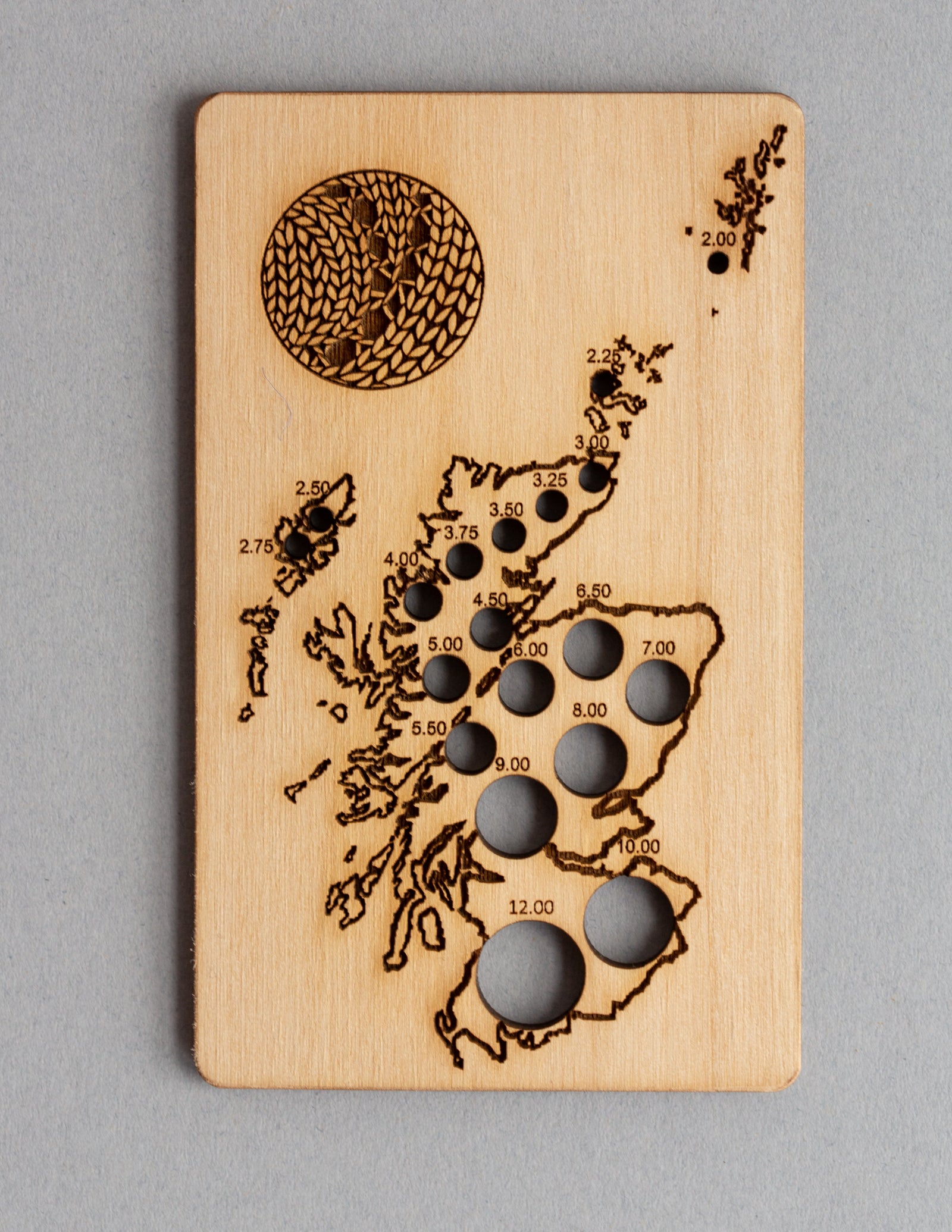
Exclusive Scotland needle gauge by Katrinkles
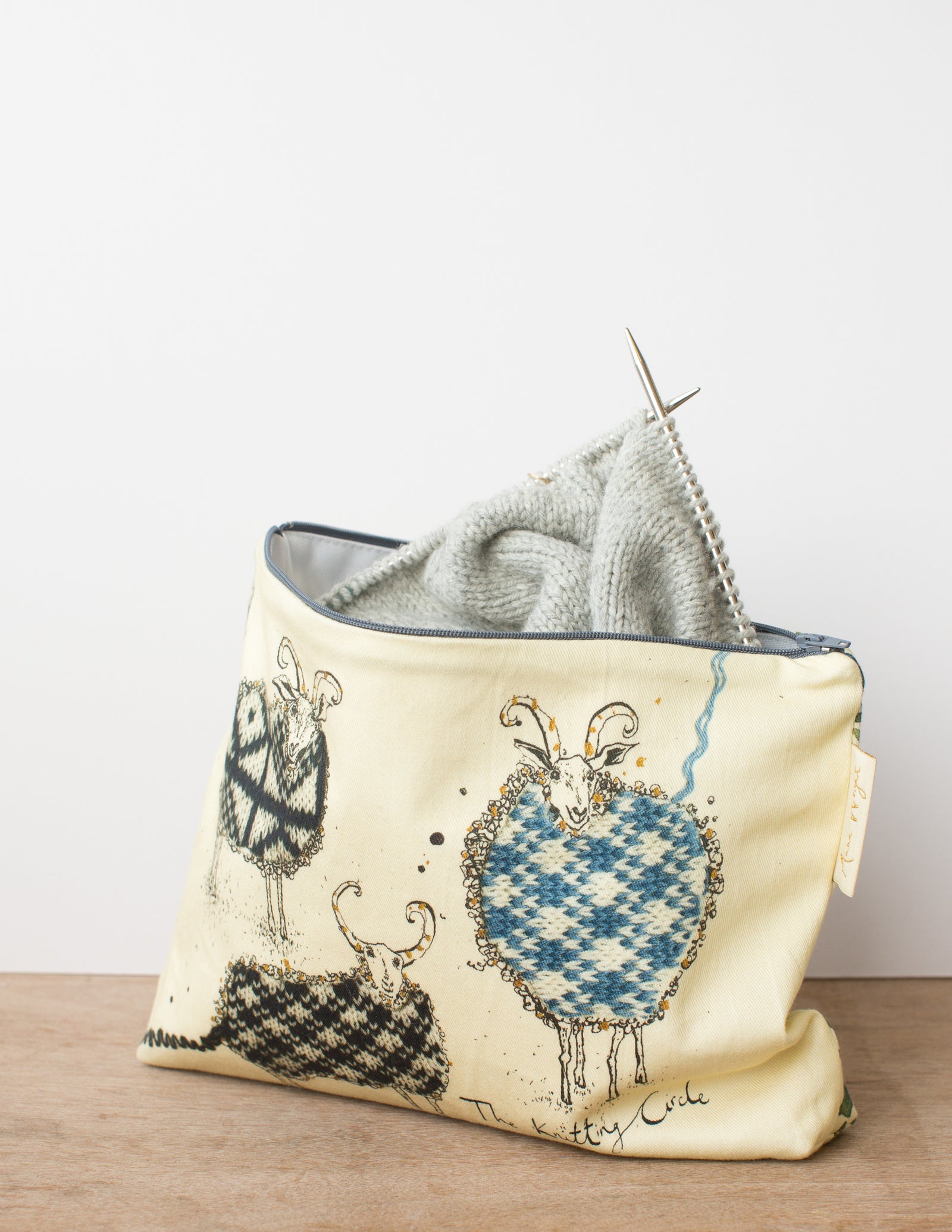
Zippered pouches in two sizes by our studio neighbour Anna Wright
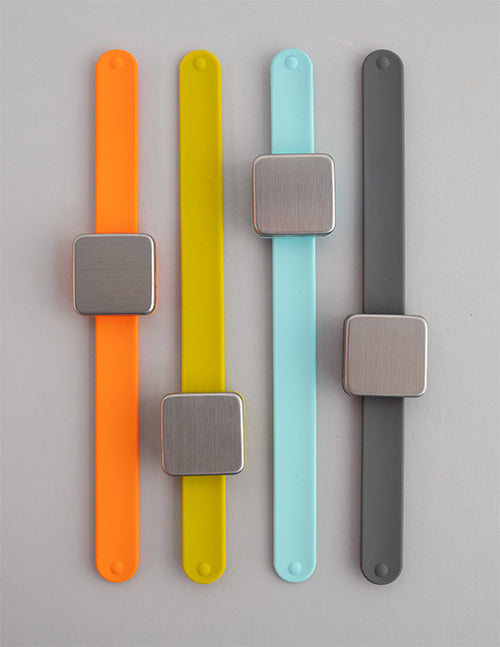
keep small tools accessible with the Maker's Keep
gift 2019
Subscribe to our Colourwork Club for a gift that lasts well into the new year. Your recipient will receive a new colourwork kit in Janurary, February and March
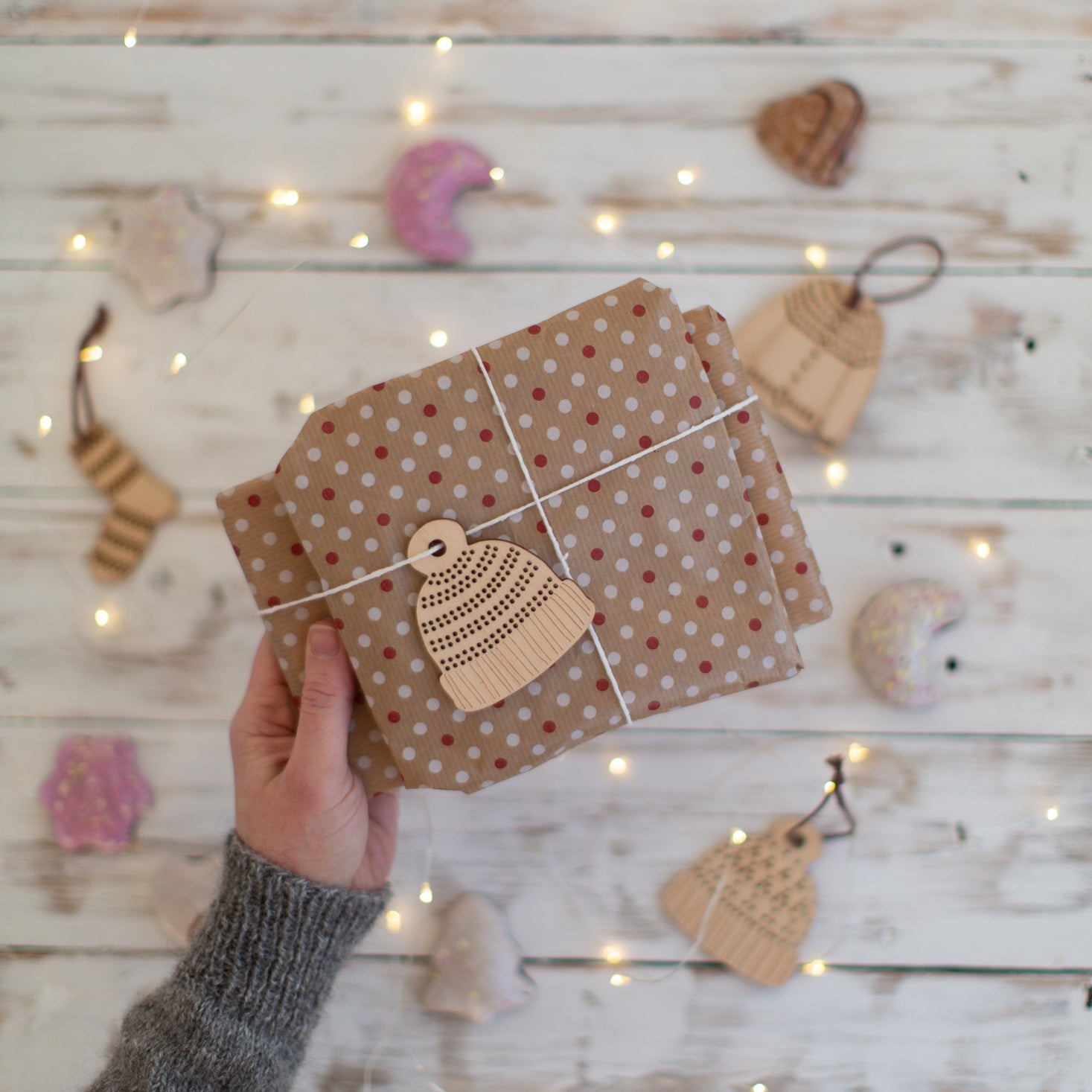
Subscribe to our Colourwork Club for a gift that lasts well into the new year. Your recipient will receive a new colourwork kit in Janurary, February and March
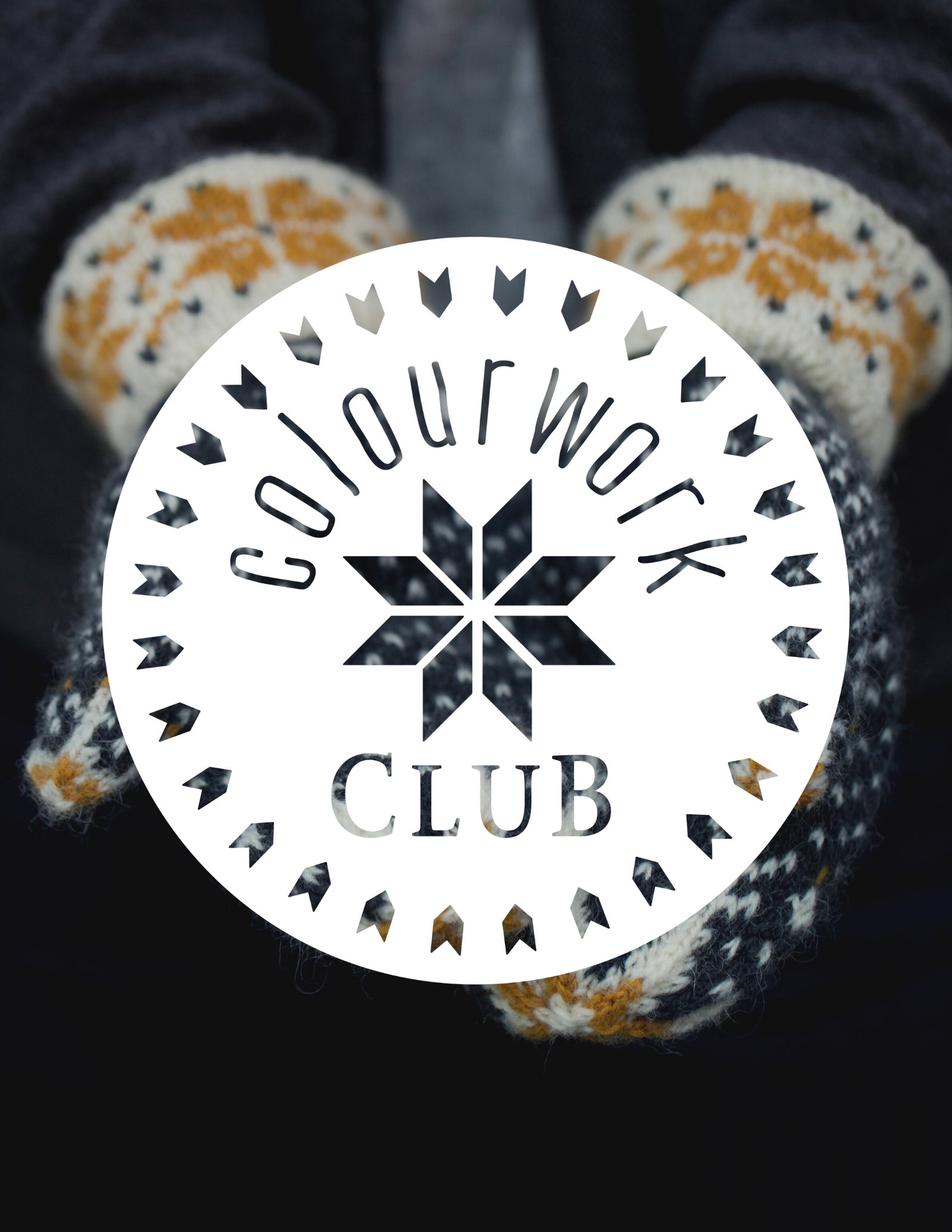
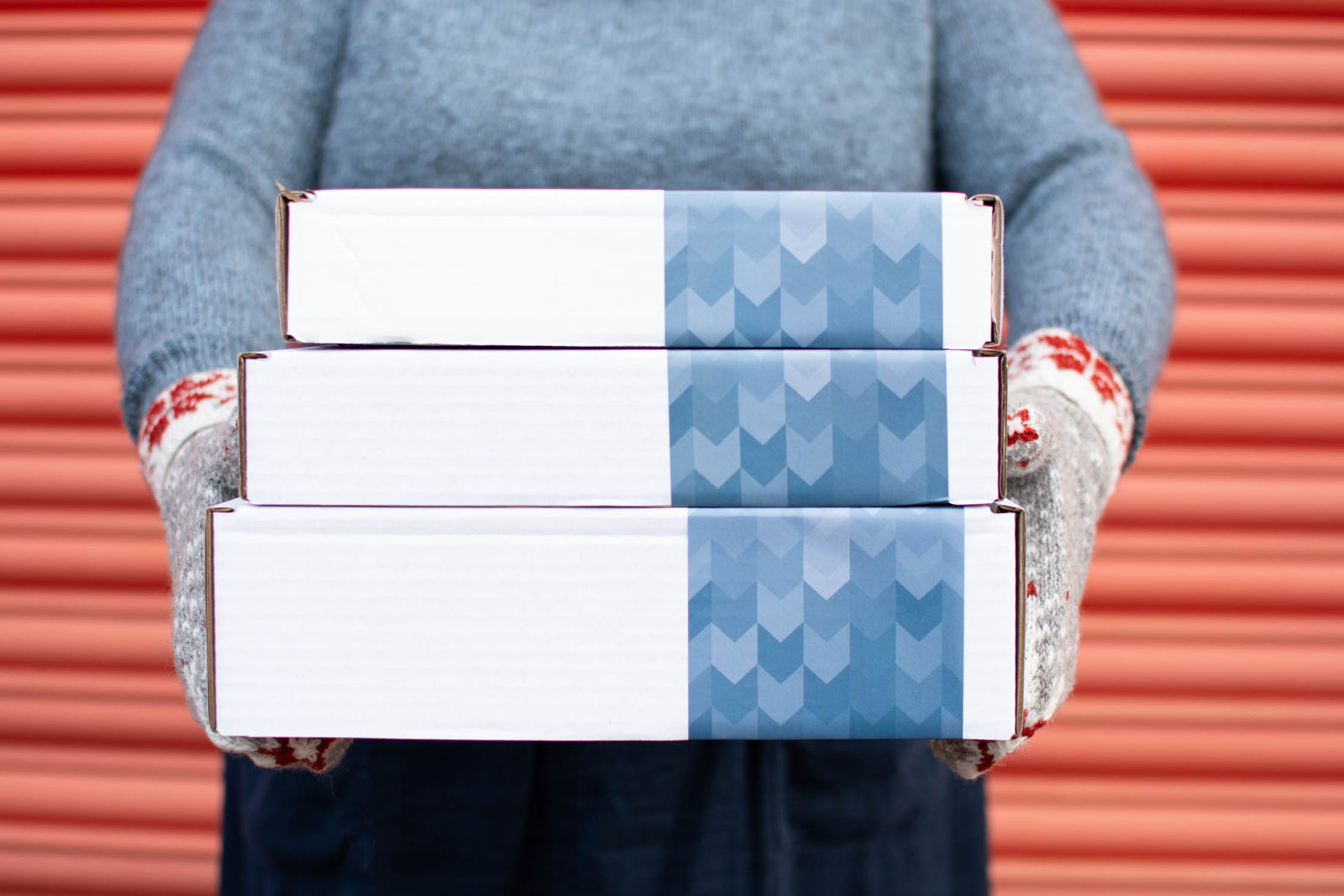
Last minute shopping? Gift cards are delivered electronically - forward the email or print it for your recipient. A range of amounts are available and gift cards don't expire.
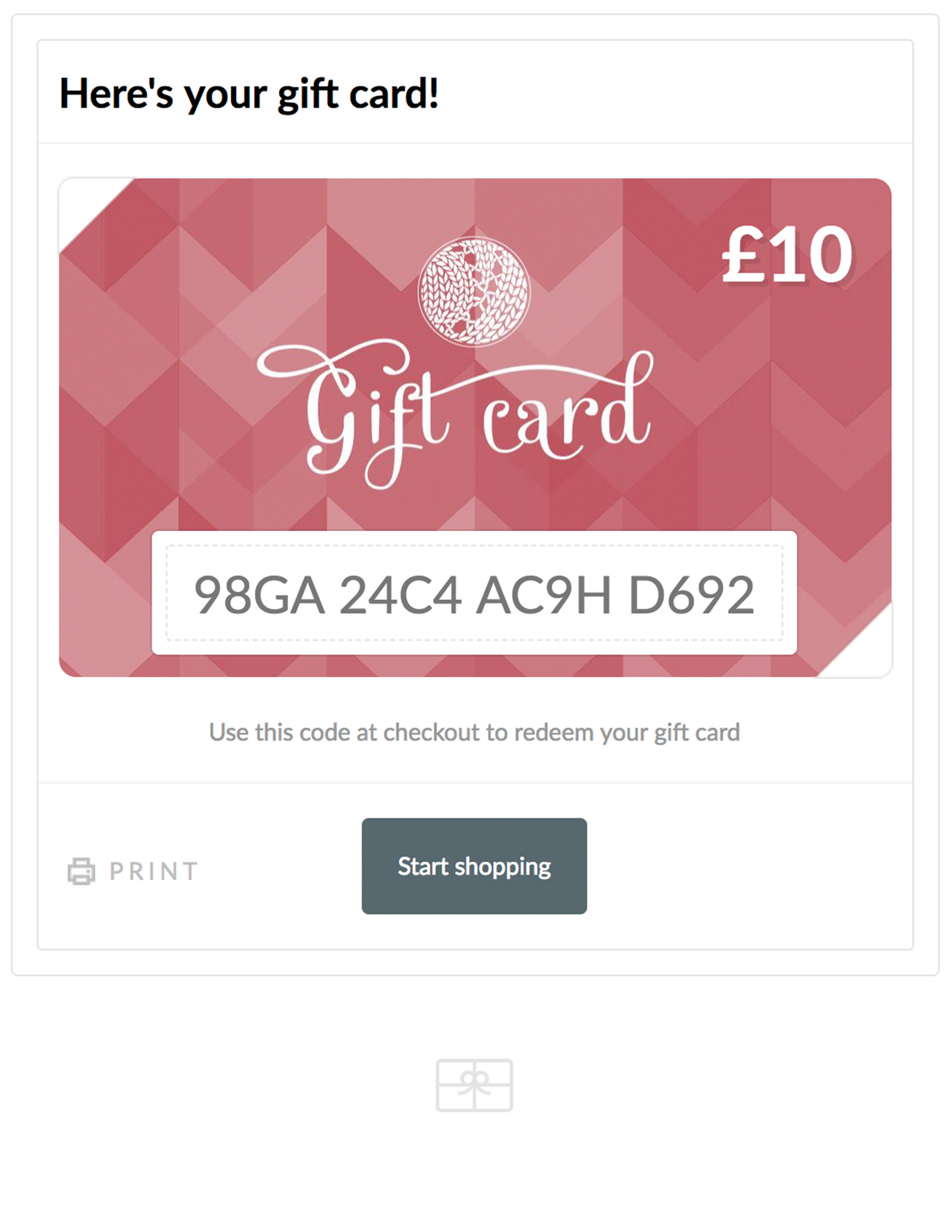
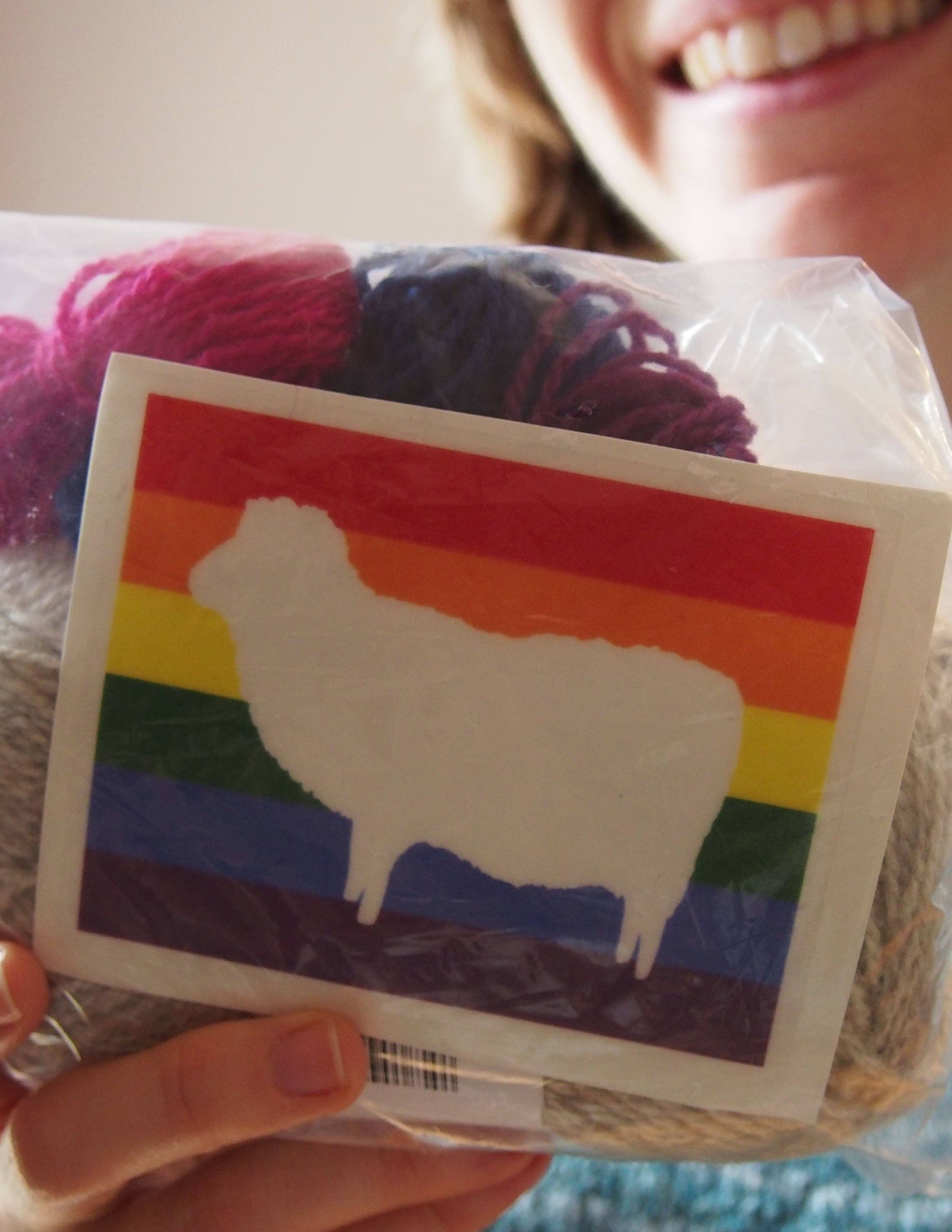
A little less invisible
June 21, 2019
This post first appeared on Whitney’s own blog and she kindly allowed us to share it with a wider audience. It has truly brought me so much joy to see knitters making and wearing their Joy mitts and, via a knitting project, feeling seen and visible. I know that Whitney’s experiences of what it means to choose to be visibly bi would resonate with many of you. Thank you for sharing your story with all of us Whitney. — Ysolda
My newest finished project is a pair of mitts, from Ysolda’s really neat Joy pattern – there’s a folded hem plus intarsia combined with double knitting just in the first few rows, which kept me on my toes, but the pattern is well-explained and the mitts knit up really fast (at least for someone like me who is accustomed to knitting sweaters).

I ordered a kit for the “bi” pattern from Ysolda’s site the day she made kits available, and decided that I wanted to knit them up during Pride month, so I cast on a few days ago and now I’m done.
 All finished!
All finished!
And yes, before anyone asks, these are for me.
 It’s really hard to find ways to pose with mitts that don’t look cheesy!
It’s really hard to find ways to pose with mitts that don’t look cheesy!
But wait! Aren’t I married to a man? Aren’t I pretty “boring, vanilla”? Maybe even a bit of a “prude”? Well, yes, I am (or have been accused of being) all of those things…and I’m also bi.
I always felt a bit different, a bit apart from my peers, growing up…I sometimes joke that I feel like an alien anthropologist – I’m deeply interested in human beings, but don’t always find that being a “normal” one comes all that naturally. (Comes with being a bit neurodivergent, I think!) But one area where I always felt especially like an alien has been sexuality. I remember in middle school, when many of my female friends became boy-crazy and my male-friends became girl-crazy, and I just…didn’t get it. At all.
But gradually, I started to get inklings of what they were all on about…but the thing was, when chatter at sleepovers turned to crushes, and my female friends were detailing the male actors, singers, athletes upon whom they were crushing, I could only silently call to mind female actors, singers, athletes. (And, among other things — totally laughing at teenage me as I write this! — for someone who was flat-chested, I spent a suspiciously inordinate amount of time perusing the Victoria’s Secret catalogs that were always arriving at our house.) Ok, young me thought, maybe I’m a lesbian?
Except…there WERE some boys I felt attracted to, among my set of friends. (My “famous person” crushes have always been ladies, not men.) And that’s where I got very confused. Because, not that being a lesbian was super-duper well accepted at that time either, but in late-90’s rural Minnesota, “bisexuality” wasn’t really a thing that was talked about in anything other than deeply demeaning ways. The particular flavor of “what it means to be a bisexual” that I was most exposed to was the “bisexuals are so obsessed with sex that they’ll have sex with anyone and everyone, especially in threesomes, and they always cheat on their partners because they’re gross, selfish people” flavor, and while grown-up me knows there’s not anything inherently wrong with being really interested in sex, or with threesomes if that’s what all involved parties want, or with polyamory more generally (I do think cheating is a terrible, disrespectful thing to do, but polyamorous relationships don’t inherently involve cheating) those just…well, not only did those stereotypes, and the tone with which they were delivered, make it clear that bi people were fairly reviled, they also REALLY didn’t fit me.
 These mitts DO fit me, hooray!
These mitts DO fit me, hooray!
Because while I knew I felt attraction to people of both genders (please excuse teenage me for reinforcing the gender binary; I’ve since learned that gender is more complex than this!), it was never, ever the sort of all-consuming obsession that I’d heard friends talk about. It was never even remotely a central part of my experience, period. I believe people when they say sex/sexuality is absolutely central to their sense of self and well-being, that they couldn’t possibly live without it, that it’s a fundamental human need…but I believe it like an alien anthropologist who’s observing humans, not as a feeling I’ve experienced. Could I be a bisexual if I actually wasn’t especially interested in having sex with anyone? What *was* I? Where did someone like me “fit”?
When I learned the term “asexual” my freshman year of college, I felt like I might’ve found my label, but I didn’t quite fit there, either. The “gray-ace” spectrum wasn’t something being talked about in my circles at that time, but that’s where I’d place myself now. The “gray-ace” concept of “demisexuality” (only experiencing attraction to those with whom you already have close emotional connection) in particular describes how I relate to men, at least (as may have been obvious from my earlier mention of never having “famous person” crush-type-feelings about men). I actually considered making the flag on one of the mitts a gray-ace flag, but my desire for matching mitts (and for not having to figure out a new double-knit flag pattern) won out.
 The double-knit intarsia flag cuff is SUCH a neat detail and Ysolda explains it really well in the pattern!
The double-knit intarsia flag cuff is SUCH a neat detail and Ysolda explains it really well in the pattern!
(By the way, I don’t think you have to identify with the gray-ace spectrum in order to not relate whatsoever to the stereotypes people have about bisexuals and needing/wanting to have multiple partners/threesomes…there’s really nothing about bisexuality that is inherently synonymous with polyamory, though obviously there’s going to be some overlap in those sets. Being attracted to multiple genders doesn’t inherently mean that in order to have a happy and fulfilled life, you need to be having sex with people from all of those genders, and certainly not at the exact same time! I mention this because these are misconceptions that even many well-intended people hold about bi folks. Those stereotypes made it that much harder for me to understand myself, and made me feel like I couldn’t exist or fit anywhere as the person I was, and I think they can harmful to many bisexual people, not just me. And obviously negative stereotypes about polyamory are harmful to those who actually are polyamorous, too.)

So here I am, a bi lady who is also a gray-ace lady who is also happily married to a man. I don’t quite fit anywhere. And yet, if I don’t speak up, I fly completely under the radar as a “straight” person, in other people’s eyes. I’ve never been especially “closeted” – I answer honestly when asked about these things, at least in environments where I feel safe, but that ability to “opt in”, so to speak, is itself a privilege. I’ve been thinking a lot about visibility and representation in the last year or so, both because of some thought-provoking sermons at my Unitarian Universalist church, and because of recent online discussions in the knitting world.
A point that Ysolda made awhile back has stuck with me – we can’t know that we are safe with another person if that person doesn’t signal their values. And no, that’s not as simple as wearing a little bi-flag pin on my purse or these mitts on my hands, though yes, there are plenty of places in my country where even my pin or these mitts could make me a target for hate. But I have an incredible amount of privilege as a bi lady who’s married to a guy. I can 100% pass for straight if I want to (I don’t want to). Because I don’t present as particularly queer (in terms of dress, hairstyle, etc.), I don’t have to experience fear, or really think about it at all, when I’m out and about with my husband…I can be invisible, and that can feel safe…for ME. But if I make that choice, to stay safely invisible, what I am doing to contribute to others’ sense of safety? How am I demonstrating solidarity with those who don’t have the privilege I do? How am I standing with my LGBTQ+ family?
Being invisible can also be really uncomfortable when it means you’re never seen for who you really are, and this is something that many, many bi people experience; people make assumptions about our orientation based on whoever we’re partnered with at that moment, so for bi women like me who are married to men, we’re assumed to be straight, our bi-ness erased. It’s not like there’s a particularly subtle way to bring it up on conversation, either, the way I could just mention “my wife” if I were married to a woman (though even that would not say “bi!”; I’d just be assumed to be a lesbian). And I’m sure some folks think, what does it even matter…if you’re a woman (monogamously) married to a man, you may as well be straight, so why do you care if people assume you are? I mean, there are plenty of things I care more about…but the thing is, I’m NOT straight, and I never have been. I’m thinking about what visible, “ordinary”, “boring”, “vanilla” bi people would’ve meant to me as that kid who knew she was different, but couldn’t make sense of where she “fit”, given the cultural messages she was getting about bisexuality and what it meant about the kind of person one could be. If a little pin on my purse, or a pair of mitts, can make me visible to someone who needs to see that they can fit, too…well, that’s why I want to wear them.
 Isn’t this the best shirt? It’s rainbow in the back!!
Isn’t this the best shirt? It’s rainbow in the back!!
Obviously no one owes their “outness” to the world, and no one owes you any “proof” of their identity, either – I share my story because I feel safe enough to do so, and tend to be an open book anyway, but if someone says that their identity is part of the LGBTQ+ family? Listen to them. Don’t judge them. Don’t challenge them to “prove” it to you (I can only say from direct experience that this happens a lot to bi people, but I suspect it also happens to LGBTQ+ people in general). Don’t test them against your stereotypes and then harass them or dismiss them when they don’t line up the way you think they should. Just believe them and respect them and support them with your words, your actions, and your resources. And if someone feels safest being invisible? That’s their choice. Respect that choice. Respect them. Love them. The more we respect and love and listen to people, the safer they will feel to be their whole selves with us. And we could bring more joy to the world.
 Just imagine that the brightness represents radiating joy, rather than an overly slow shutter speed!
Just imagine that the brightness represents radiating joy, rather than an overly slow shutter speed!
A small number of Joy yarn packs in Trans and Bi flag colours are still available but you can also order a pdf pattern here, the design is ideal for using leftovers and the flag colours can be adapted to the pride flag you prefer. Stickers and window clings are also available.
Also in Journal
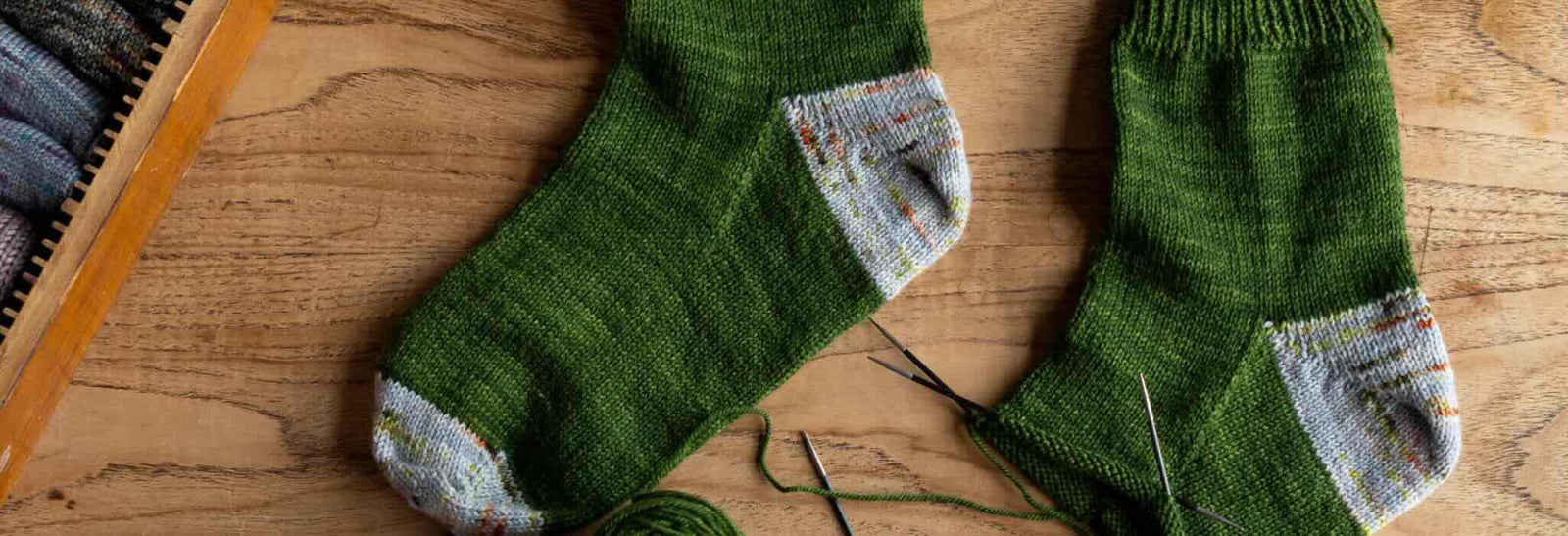
Deep Shadow Heel Tutorial
September 25, 2025
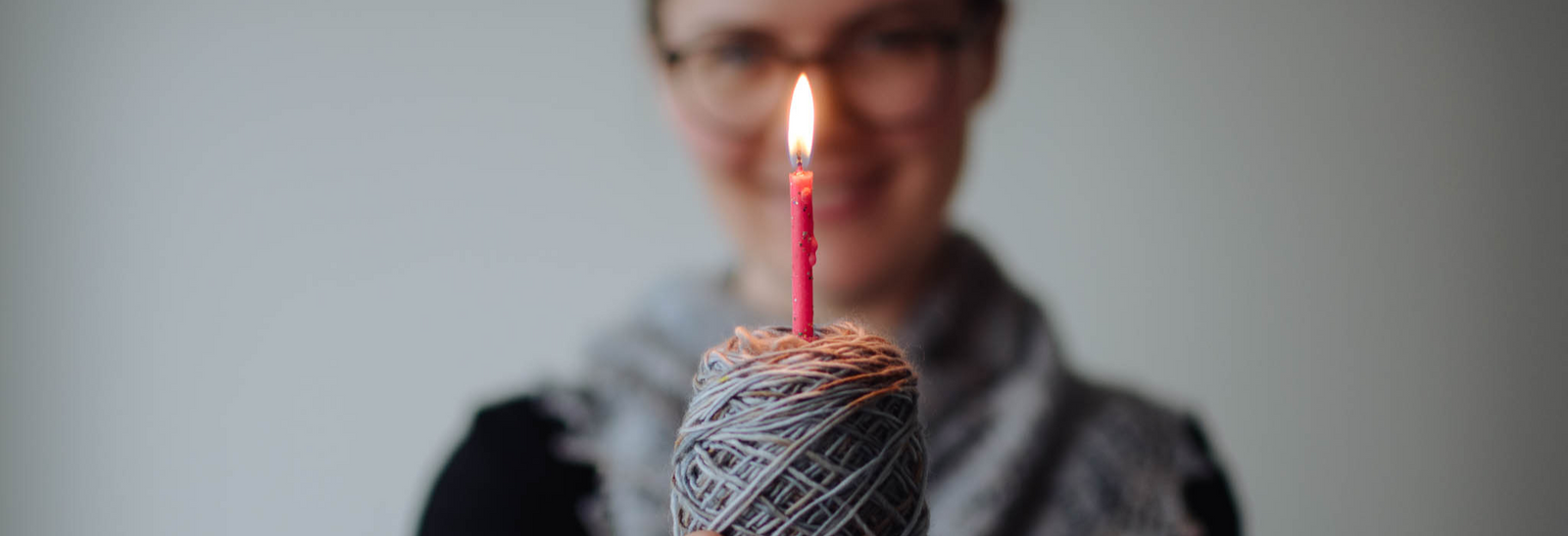
20 Years of Ysolda Knitting Patterns: Part 2
June 23, 2025
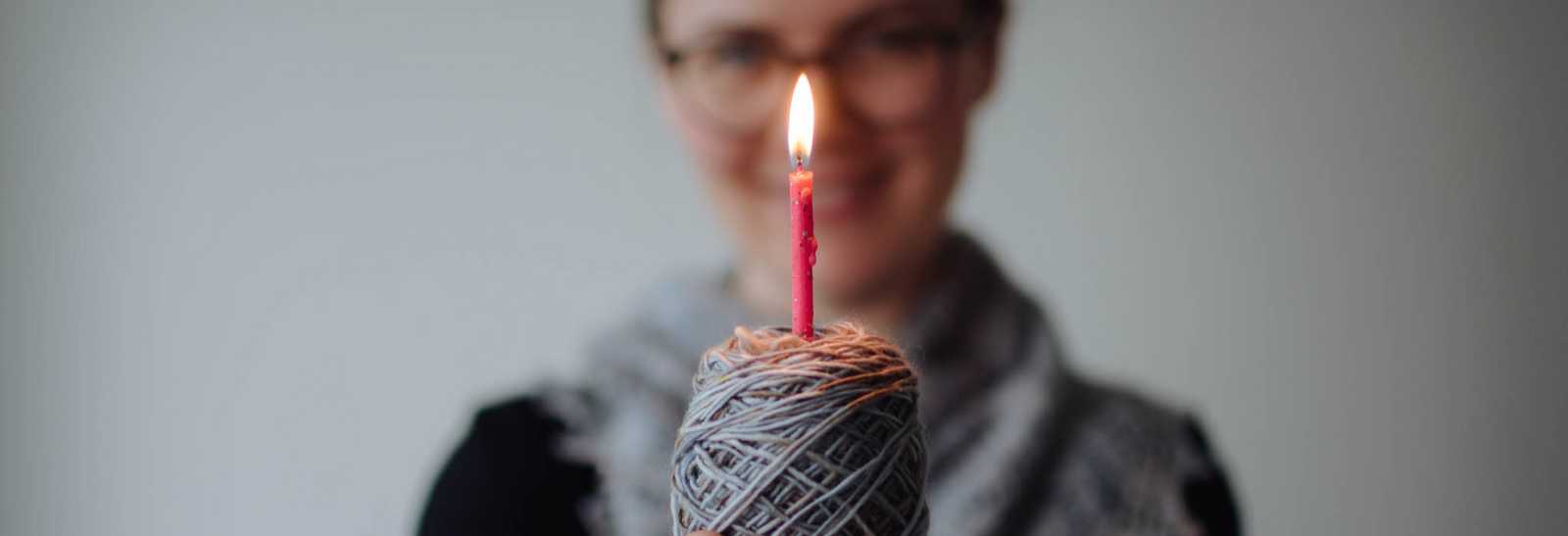
20 Years of Ysolda Knitting Patterns: Part 1
June 19, 2025
Recent Articles
-
Deep Shadow Heel Tutorial
September 25, 2025
-
20 Years of Ysolda Knitting Patterns: Part 2
June 23, 2025
-
20 Years of Ysolda Knitting Patterns: Part 1
June 19, 2025
-
Learn to Knit: Mattress Stitch
March 29, 2023
-
How to Knit a Scarf: A Beginners Guide to Scarf Knitting
March 23, 2023
-
Learn to knit: the long tail cast-on
February 03, 2022
-
How to Graft Your Knitting
December 09, 2021
-
Crochet Provisional Cast-on
December 02, 2021
-
Learn to knit: How to knit in the round with double pointed needles
November 25, 2021
-
Learn to knit: How to knit in the round using the magic loop technique
November 25, 2021
Free resources
-
KALS, step-by-step pattern guides and free patterns
Learn brioche with the free Daniel's Hat pattern
Tombreck - a free chevron beanie pattern
Working the brioche neck detail on the Polwarth sweater
Installing a zipper and ribbon, finishing wee Carson
Yarn colour ideas for Threipmuir sweater
Additional colourways for the Joy mitts (choose your pride flag)
How to join the shoulders on Wardie
How to join the pockets on Granton and Wardie
Finishing Resources for Granton
Broughton mittens tutorial part 1
Broughton mittens tutorial part 2
Broughton mittens tutorial part 3
Basics
Casting on
Decorative Channel Island Cast-on
Binding off
3 Easy Stretchy Bind-offs (p2tog bind-off; k2togtbl, k1 bind-off; Jeny's surprisingly stretchy bind-off)
Tubular Bind-off for brioche stitch
Increasing
Paired increase methods compared
How to continue in pattern while increasing and decreasing
Decreasing
Brioche stitch double decreases
Knitting in the round
How to Knit in the round using Magic Loop
How to Knit in the round using DPNs
Short rows
Swatching and gauge
Tips and tricks
Avoiding ears when binding off
Tighter purl stitches for neater cables and ribbing
Cabling without a cable needle
How to knit more symmetrical yarn overs
Bust darts in sweaters with all over stitch patterns
A magic formula for evenly distributing shaping
Superwash v Non-Superwash Wool
Picking up sts from the middle of the fabric
Reading knitting patterns
Understanding "continue in pattern"
Help! Where am I in my knitting project?
Using charts, even if you hate them
Finishing
Garment knitting
Joining the body and sleeves on a seamless bottom up sweater
Sizing
Ysolda’s sizing chart for knitwear designers
Inclusive garment knitting
How to pick a garment without a model for you (specifically addresses finding garment patterns when your gender identity isn't represented and the styles you want to knit might not be sized to fit your body)
How does ease affect inclusive size ranges?
Specific stitch patterns
Lace
Identifying and fixing mistakes in lace knitting
Colourwork
Getting started with stranded colourwork
Understanding colour dominance
Working stranded colourwork over small circumferences
Decreases in stranded colourwork
Holding the yarn for stranded colourwork
Ladderback Jacquard (a neat way to deal with long floats)
Cables
Cabling without a cable needle
Cabling without a cable needle on the wrong side
How to knit cabled decreases
Closed ring cable increases and decreasesBrioche
How to work brioche stitch in the round
Other crafts
Cross stitch
How to begin your first large cross stitch project
How to finish a cross stitch project with an embroidery hoop frame
Mending

Sign up today
Find out the latest news from the studio such as sales, pattern releases, and new workshops or KALs our learning community, The Knitwork. We also share helpful tips and exclusive subscriber discounts...



